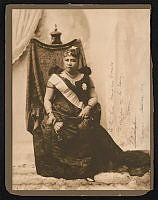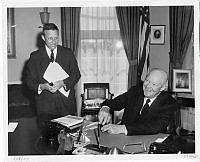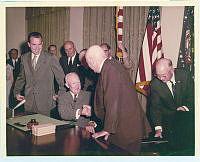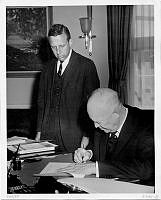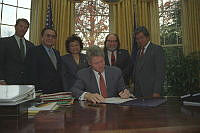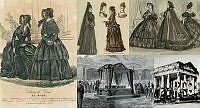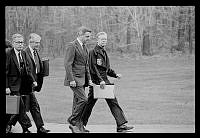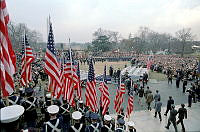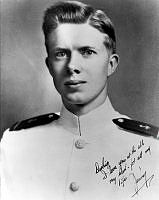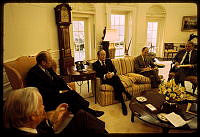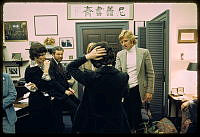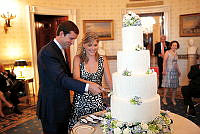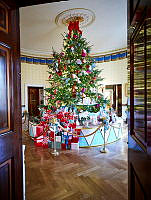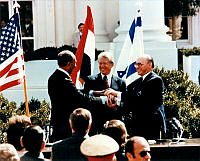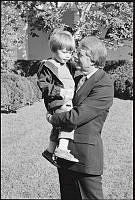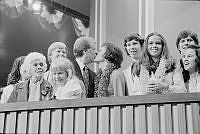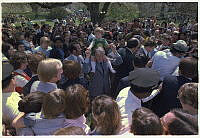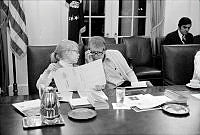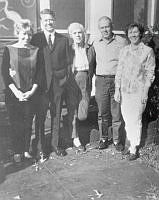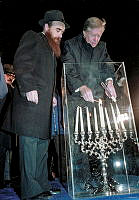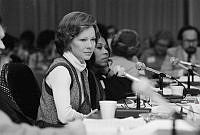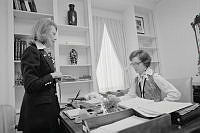Rubenstein Center Scholarship
Spies, Lies and Disguise
Abraham Lincoln and the Baltimore Plot
“This trip of ours has been very laborious and exciting. I have had no time to think calmly since we left Springfield. There is one reason why I write tonight. Tomorrow we enter slave territory. Saturday evening, according to our arrangements we will be in Washington. There may be trouble in Baltimore. If so, we will not go to Washington, unless in long, narrow boxes. The telegram will inform you of the result, long before this letter reaches you.”- John Milton Hay, Secretary to Abraham Lincoln1
On February 11, 1861, Abraham Lincoln began a train journey from Springfield, Illinois, to Washington, D.C. for his inauguration. While many presidents elect before and after have made similar journeys to the White House, none have faced so much opposition. For Abraham Lincoln, the road to the White House was a dangerous undertaking involving undercover operatives, brewing discontent over his election, and a secret assassination plot.
After Lincoln’s election on November 6, 1860, southern states began to secede from the Union. Lincoln won a decisive Electoral College victory with 180 votes over his opponents’ combined total of 123 votes. However, ten of the fifteen states that allowed slavery refused to vote for him. Slave owners feared that Lincoln, already opposed to the extension of slavery into new territories, would use the powers of the presidency to end slavery in the United States.2 In response to his election, South Carolina became the first state to secede on December 20, 1860. By February 1, 1861, Mississippi, Florida, Alabama, Georgia, Louisiana, and Texas had followed suit. This placed the future of the country in jeopardy and put president-elect Abraham Lincoln in a potentially perilous position.3
Wild rumors swirled around the country, including threats to blow up the Capitol, kidnap President James Buchanan, tear up train tracks, blow up bridges, and assassinate Lincoln.4 In the weeks leading up to his departure, Lincoln’s new secretary, John Milton Hay, became concerned as an increased number of threats against Lincoln’s life crossed his desk. Meanwhile in Washington, William H. Seward, poised to become secretary of state, implored Lincoln to arrive in the capital as soon as possible, writing:
Habit has accustomed the public to anticipate the arrival of the President-elect in this city about the middle of February, and evil-minded persons would expect to organize their demonstrations for that time. I beg leave to suggest whether it would not be well for you keeping your own counsel to be prepared to drop into the city a week or ten days earlier. The effect would be reassuring and soothing.5

Andrew Gardner, renowned Civil War photographer, took this photograph of Abraham Lincoln on November 8, 1863.
Library of CongressConcurrently, Samuel Morse Felton, president of the Philadelphia, Wilmington and Baltimore (PW&B) Railroad, worried about the safety of his railroad operations after catching wind of plots to sabotage his rail lines. He was particularly worried about Maryland, specifically the city of Baltimore. A significant section of Felton’s railroad ran through Maryland and although it was still part of the Union, in the winter of 1861 Maryland was a slave state vigorously debating secession in the state legislature.6 If war did break out, Felton’s PW&B Railroad would be vital for the transport of soldiers and ammunition. Unfortunately for Felton, the numerous wooden bridges over the Gunpowder River and ferry boats in Havre de Grace, Maryland presented a number of vulnerable targets for outraged secessionists.7
At this point, Felton called upon the services of famed Scottish detective Allan Pinkerton, head of the Pinkerton National Detective Agency in Chicago, Illinois. On January 21, 1861, Felton met with Pinkerton in Philadelphia to discuss the threats. After the meeting, Pinkerton sprang into action. First, he sent Felton a detailed plan for railroad protection and stressed the importance of secrecy in carrying out the arrangement. Then, Pinkerton set out for Baltimore with some of his best detectives. At this point, Felton and Pinkerton were both more concerned with safeguarding the railroad than a possible assassination attempt on Lincoln.8
After sending his detectives out to survey Baltimore, Pinkerton established his headquarters at an office under the disguise of John H. Hutchinson, stock broker. Along with his assistant Harry Davies, Pinkerton frequented the pubs and taverns of Baltimore, conversing with secessionists and mixing with Baltimore businessmen.9
Meanwhile, Lincoln’s team publicly released the itinerary for his whistle-stop tour, providing dates and times of arrival in various cities across the country. Although those surrounding the president elect expressed deep concern, by all accounts Lincoln did not appear worried for his own safety. Instead of taking precautions, Lincoln insisted on making the 2,000 mile, thirteen-day journey through numerous cities including Cleveland, Indianapolis, Cincinnati, Buffalo, Albany, New York, Philadelphia, Harrisburg, and Baltimore in an effort to promote national unity.10 On February 11, 1861, Lincoln departed Springfield after delivering a somber address to the crowd, “I know not how soon I shall see you again. A duty devolves upon me which is perhaps greater than that which has devolved upon any other man since the days of Washington.”11
At each stop, Lincoln delivered public addresses and attended celebrations in his honor. In his speeches, he expressed his commitment to preserving the Union. He traveled with his family and his two private secretaries, John Nicolay and John Hay. For protection, several military personnel and his friend and personal bodyguard, Ward Hill Lamon, accompanied Lincoln.12

This illustration of Allan Pinkerton was printed in Harper's Weekly following his death on July 1, 1884.
Library of CongressAs the president elect traveled, Allan Pinkerton and his detectives went deeper undercover, investigating possible threats to the PW&B Railroad and discovering that police forces, government officials, and many citizens in Baltimore were sympathetic to the secessionists. After making contact with stock broker James H. Luckett, Pinkerton accidentally stumbled upon a plot to assassinate Lincoln.13 Through Luckett, Pinkerton learned of a small group of men interested in Lincoln’s stop in Baltimore. Luckett introduced Pinkerton to the man heading up the assassination plot, an Italian barber named Cypriano Ferrandini. 14
According to the original publicized travel plan, Lincoln was set to arrive at Baltimore’s Calvert Street Station from Harrisburg, Pennsylvania, on February 23 aboard the Northern Central Railway. Then, Lincoln would take a carriage to Camden Street Station and board a Baltimore and Ohio (B&O) Railroad train to complete the short journey to Washington, D.C.15 Allegedly, the small group of conspirators headed by Ferrandini planned to kill Lincoln when he moved from the train to the carriage for the mile-long journey from Calvert Street Station to Camden Street Station. According to Pinkerton:
A row or fight was to be got up by some outsiders to quell which the few policemen at the Depot would rush out, thus leaving Mr. Lincoln entirely unprotected and at the mercy of a mob of secessionists who were to surround him at that time. A small steamer had been chartered and was lying in one of the Bays or little streams running into the Chesapeake, to which the murderers were to flee and it was immediately put off for Virginia.16
The actual existence and severity of the above plot detailed by Allan Pinkerton has been disputed by historians and Lincoln’s contemporaries alike. He was known to exaggerate the truth in order to spin elaborate tales of bravery and bravado, and in his later years published a series of self-promoting memoirs which waxed poetic about his greatest adventures. For the rest of his life, Pinkerton remained caught up in the controversy over the true events of February 1861. He passionately defended himself, and in 1868 published a privately printed, widely distributed booklet which included accounts of the events from Lincoln and individuals in his traveling party, as detailed to historian Benson J. Lossing.17
In particular, Lamon disputed Pinkerton’s tale, refusing to submit a letter backing the story for Pinkerton’s booklet and later publishing contradictory statements in his own book, The Life of Abraham Lincoln.18 Lamon wrote, “He [Pinkerton]...soon got, or pretended to get, upon a scent that promised a heavier reward. Being intensely ambitious to shine in the professional way...it struck him that it would be a particularly fine thing to discover a dreadful plot to assassinate the President elect.”19 While Lamon’s account has also been called into question, Pinkerton certainly relied heavily on rumors, whispers, and hearsay to establish the facts of the Baltimore Plot case.20

In this photograph by Alexander Gardner, Allan Pinkerton (left) stands next to Abraham Lincoln (center) and Major John A. McClernand (right) at Antietam Battlefield in September 1862. During the Civil War, Allan Pinkerton served the Union Army and operated undercover as Confederate major, E.J. Allen.
Library of CongressDespite later contradictions to his version of events, Pinkerton dispatched a message to Lincoln supporter and confidant, Norman Judd, upon discovery of the assassination plot. On February 21, Pinkerton traveled to Philadelphia to divulge the facts of his investigation to Felton and Judd. Alarmed by his findings, Judd quickly arranged a meeting with Lincoln.21
Later that same evening, Lincoln met with Pinkerton for the first time. Pinkerton told Lincoln about the alleged assassination plot and encouraged the president elect to ride to Washington, D.C. immediately. Lincoln refused, telling historian Benson J. Lossing, “He urged me to go to Washington that night. I didn’t like that. I had made arrangements to visit Harrisburg, and go from there to Baltimore, and I resolved to do so. I could not believe there was a plot to murder me.”22
Although Lincoln refused to diverge from his scheduled activities, he did allow Judd and Pinkerton to adjust his travel to Washington, D.C. after he fulfilled all of his obligations. According to Pinkerton’s record book, Lincoln stated, “I shall endeavor to get away quietly from the people at Harrisburg to-morrow evening and shall place myself in your [hands].”23 At this point Pinkerton began preparations for a top secret 200-mile train trip through Baltimore, deviating from the published schedule.
The following day, February 22, President Lincoln fulfilled his obligations. He raised the flag over Independence Hall at 6 a.m. before boarding his train car for Harrisburg. Despite Lincoln’s initial reluctance to follow Pinkerton’s plan, he received word of another assassination plot before departing Philadelphia. Frederick W. Seward, son of future Secretary of State William Seward, pulled Lincoln aside to inform him that Lieutenant-General Winfield Scott, the head of the United States Army, also discovered an assassination plot. This new information convinced the president elect of the situation’s seriousness and he prepared to strictly adhere to Pinkerton’s plan.24
Lincoln spent the day in Harrisburg. At 5 p.m. he dined with Pennsylvania Governor Andrew Curtin. At 5:45 p.m. he excused himself from the dinner and left the venue through the back door. According to Lincoln’s recollection a comical scene unfolded. While in New York several days prior, a friend gifted Lincoln “a new beaver hat in a box.” Upon leaving the Harrisburg dinner, Lincoln pulled this new hat from his pocket and placed it on his head. A far cry from his famous top hat, the beaver hat served as a clever disguise. He later recalled, “Then I put on the soft hat and joined my friends without being recognized by strangers, for I was not the same man.”25

On March 4, 1861, President Abraham Lincoln gave his first inaugural address from the steps of the Capitol.
Library of CongressDisguised by his hat and shawl, Lincoln traveled back to Philadelphia alone with Lamon, his bodyguard. As soon as they departed Harrisburg in a private train car, the telegraph wires were cut to ensure that news of Lincoln’s departure could not reach Baltimore.26 Once back in Philadelphia, Pinkerton and Lamon escorted the president elect aboard a train scheduled to depart for Baltimore at 11 p.m. Pinkerton noted that Lincoln remained, “cold, calm and collected.” So as not to arouse suspicion, the small party traveled aboard a public train car, taking their place in back of the sleeping car. Pinkerton’s agent, Kate Warne, reserved four sleeping berths for the party, posing as the sister of an “invalid traveler.” There was little privacy and Lincoln was only concealed from the other passengers by a thin curtain.27
At 3:30 a.m. the small party arrived to Baltimore’s President Street depot. Rail workers hitched the sleeping car to a team of horses, pulling the car a mile through the streets of Baltimore to the Camden Street Station.28 At this point the car was attached to a new train and the party proceeded to Washington, D.C. At 6 a.m. on February 23, they arrived safely at the Baltimore & Ohio railroad depot, successfully foiling any conspiracy to end Lincoln’s life. Lincoln took a carriage to the Willard Hotel to prepare for his inauguration.29
After Lincoln’s safe arrival, Pinkerton greeted the rest of Lincoln’s party at Annapolis Junction and then returned to Baltimore. There he met his informant, James H. Luckett, who remarked, “if it had not been for damned spies somewhere, Lincoln never could have passed through Baltimore.” According to Pinkerton, Luckett vowed his group would make another attempt to assassinate Lincoln.30
Abraham Lincoln survived the next few weeks and was inaugurated as the 16th President of the United States on March 4, 1861. During the Civil War Pinkerton continued to aid Lincoln, going undercover as a confederate soldier and assisting the Union in covert operations.31 After serving as president for the duration of the Civil War, a separate assassination plot succeeded and John Wilkes Booth fatally shot Abraham Lincoln on April 14, 1865. After his tragic death, President Abraham Lincoln’s remains were placed aboard the presidential railroad car that had been built specifically for him at the end of the war. It was his first and last trip on the presidential car, and the train carried his body along the same route as his 1861 journey to Washington so Americans could pay their final respects.32

This is a photograph of Abraham Lincoln's funeral train, which would carry President Lincoln's casket from Washington, D.C. to Springfield, Illinois where it was laid to rest in 1865.
Library of Congress












